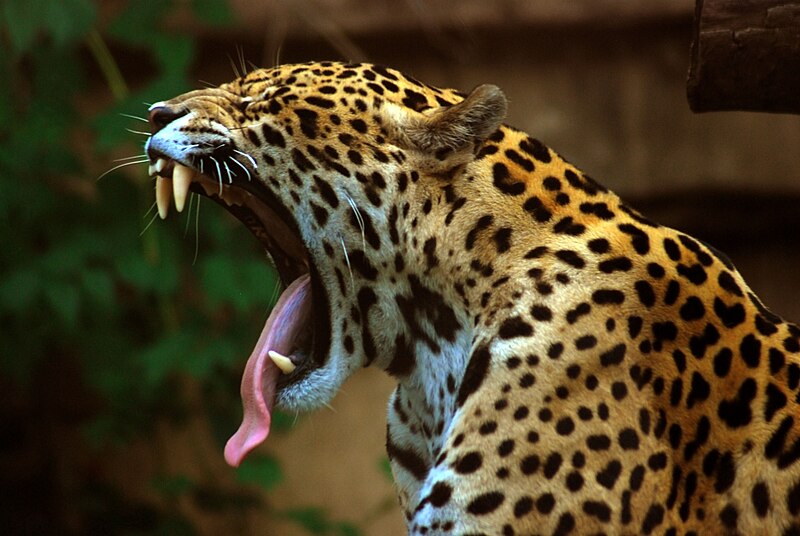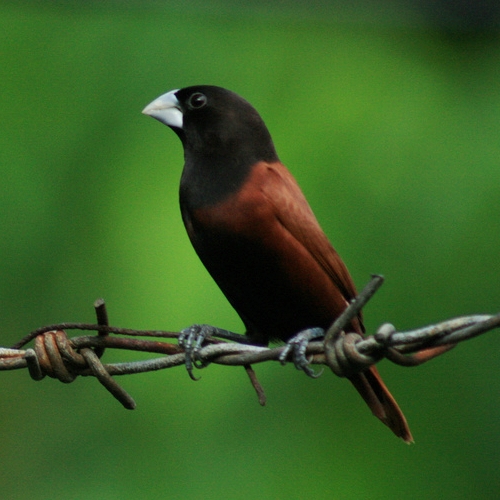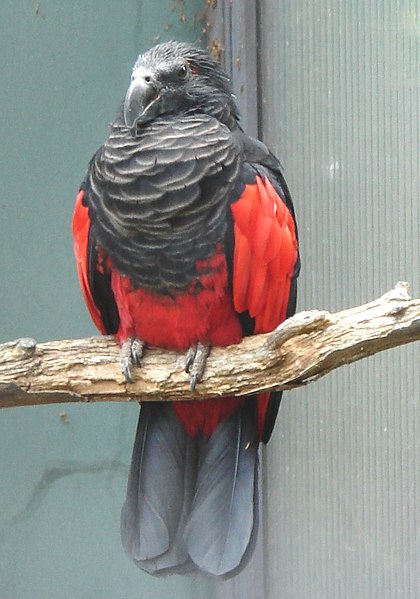 I’m pleased to say that I’m now posting several notes (“Tweets”) on Twitter each day, 7 days a week. I’ve worked with everything from ants to elephants, and so much interesting info comes my way – a lot of it through other zoologists and my own activities. Twitter will make it easy to share this as well as breaking nature news and discoveries as they happen. Things I’ve noticed in my collection or as I’m wandering about in the field, newly discovered species, interesting tidbits passed on by others, my take on some of the day’s news items…anything and everything animal-related will be mixed in.
I’m pleased to say that I’m now posting several notes (“Tweets”) on Twitter each day, 7 days a week. I’ve worked with everything from ants to elephants, and so much interesting info comes my way – a lot of it through other zoologists and my own activities. Twitter will make it easy to share this as well as breaking nature news and discoveries as they happen. Things I’ve noticed in my collection or as I’m wandering about in the field, newly discovered species, interesting tidbits passed on by others, my take on some of the day’s news items…anything and everything animal-related will be mixed in.
Read More »
Category Archives: Fun Stuff
Feed SubscriptionHand Rearing Black-Headed Mannikins and Other Finches

While working for a bird importer in years past, I had the opportunity to hand-raise a number of finch chicks. The following information is based on recent and past experiences with the Black-Headed Mannikin (Lonchura atricapilla), also known as the Black-Headed Nun or Munia, but could be applied to a number of related birds.
The youngest chicks I’ve worked with were 4-6 days old and, like most Mannikins, had hatched in a domed nest (please see photo). They were reared in plastic containers lined with dry grass in an incubator set at 90 F (range: 86-93 F).
Feeding Nestlings
I feed very young finches at 2 hour intervals, from 5 or 6 AM to midnight at first, and cut back over 2 weeks or so to 6 AM – 8 PM. Hand Rearing Formula (warmed per directions) offered via syringe serves well as a base diet. Although not strictly necessary, to this I add a “drop” of peanut butter and 2 drops per syringe of sunflower oil. A bit of cooked egg yolk and a drop of Avitron, provided three times weekly, completes the feeding regime.
Despite their delicate appearance, healthy Mannikin chicks are ravenous. After a few days, they develop the amusing habit of raising one wing in order to ward off competitors…mini “jousting matches” sometimes break out!
Young Mannikins can only take a small amount at each feeding, and will choke or aspirate food into the lungs if it is forcibly squirted down their throats. The safest way to feed them is to gently release from the syringe just enough food to fill their mouths…at a frequency of every 2 hours, this will provide quite enough nourishment.
Care of Fledglings
 Upon fledging, the chicks should be fed on a 6AM – 8PM schedule until they begin pecking at food on their own. Most begin trying solid food on the fifth day after fledging, but this varies widely…close observation is very important at this point.
Upon fledging, the chicks should be fed on a 6AM – 8PM schedule until they begin pecking at food on their own. Most begin trying solid food on the fifth day after fledging, but this varies widely…close observation is very important at this point.
Their first meals should be offered on the cage floor, not in cups, to assure that they are aware of its presence. Seed-based Finch Nestling Food, Egg Food and cut sprouts should be available at all times.
Once the fledglings have begun to feed regularly on their own, you can gradually reduce the syringe feedings to 2-3 times per day. Continue this schedule until they lose interest in the syringe, which may take an additional 2-3 weeks. It is a mistake to rush the weaning process – birds decline in condition very rapidly at this age, and poor nutrition during the fledgling period will have lifelong consequences for their health.
Black-Headed Mannikins and related birds prefer to sleep in a nest or enclosed space, even outside of the breeding season. Fledglings raised together usually crowd into one covered nest, but provide extras in case of aggression.
Although generally quite hardy as adults, Mannikins are cold-sensitive as chicks. Until you are certain that their immune systems are functioning well, take extra care to keep the youngsters warm at night (a hot spot of 86-90 F, with an ambient temperature of 80-82 F, works well). A red or black night bulb, designed for use with reptiles, will provide heat without disturbing their day/night cycle.
Further Reading
Please see my article Introducing Mannikins for more information on these beautiful finches.
A video of Black-Headed Mannikins in the wild is posted here.
Black headed Finch image referenced from wikipedia and originally posted by SnowmanradioFinch nest image referenced from wikipedia and originally posted by Kguirnela
Grit, Calcium, Salt and Water – Wild Bird Feeding “Extras” – Part 1
While any food provided to wild birds is beneficial, there are a few items that are very important to their health, especially in the winter, but which are often over-looked by well-meaning avian enthusiasts.
Grit
Pigeons, Doves and many other birds must swallow small stones, sand and similar materials (“grit”) in order to break down seed coats and other foods before digestion can take place. Grit is often in short supply during the winter, being either covered with snow or frozen to the ground (in NYC, I’ve observed English sparrows on buildings, pecking at gravel within brick mortar).
You can help winter birds along by providing pet bird gravel, sand and oyster shell (available at garden supply shops) in snow-free locations. It is best to keep grit separated from food, as it will be used slowly and may become contaminated with feces if it lies out too long.
Calcium
Calcium is especially important as winter turns to spring, since female birds utilize this mineral to produce egg shells. However, insects, the main source of calcium for many species, are often scarce at this time of the year. Our Wild Bird Mealworms will be most appreciated by nearly every bird that visits your feeder. You can also supply calcium by mixing oyster shell and ground-up eggshells into your wild bird food.
Food and Shelter
Of course, food and shelter are important concerns year-round. Please be sure to check out our extensive line of bird and wildlife foods, houses and feeders.
Next time we’ll cover a few additional winter-feeding essentials.
Further Reading
Winter is a great time to try your luck at hand-feeding wild birds. Please see Hand Taming Wild Birds for more details.
Woodpeckers, chickadees and other acrobatic birds will put on quite a show if given the chance – please check out Feeding Woodpeckers and Other Avian Athletes for details.
A Most Unusual Psittacine – the Pesquet’s or Vulturine Parrot
You’re not likely to run into a Pesquet’s Parrot ( Psittrichas fulgidas) at your local pet store, as they are quite rarely kept even in zoos. Also known as the Vulturine or Vulture-headed Parrot, this bird is so unique that I just had to introduce it here.
Shockingly Odd!
 Having worked for a bird wholesaler during the heyday of parrot imports, I was well-acquainted with many unusual species by the time I first laid eyes on a Pesquet’s. I had even seen some of the relatively few photos of it that existed at the time. However, I was awestruck upon coming face to face with a group on my first day as bird keeper at the Bronx Zoo…photos did not do justice to this parrot oddity.
Having worked for a bird wholesaler during the heyday of parrot imports, I was well-acquainted with many unusual species by the time I first laid eyes on a Pesquet’s. I had even seen some of the relatively few photos of it that existed at the time. However, I was awestruck upon coming face to face with a group on my first day as bird keeper at the Bronx Zoo…photos did not do justice to this parrot oddity.
The head and throat are largely bare of feathers, and the beak thin and hooked – making the head look quite small for the 18-inch body. This imparts, as its alternative names suggest, the appearance of a somewhat offbeat vulture. But no vulture is clad in the jet black and brilliant red feathers of the Pesquet’s parrot. I also noticed that, rather than climbing about in typical parrot fashion, these characters hopped, flitting their wings as they went. I was left “aviculturaly disoriented”!
Diet-Driven Evolution
Diet seems to have guided the loss of head feathers in the true vultures and the Vulturine Parrots. Both feed on foods that could easily gum up and otherwise foul feathers – carrion in the case of vultures and figs in the case of their parrot namesakes.
Flower blossoms and nectar comprise the remainder of the diet of these highly specialized fig-eaters.
Range and Status
Pesquet’s Parrots are limited in range to mountainous rainforests in an area spanning the length of central New Guinea. Unlike most other resident parrots, they do not occur on any of the offshore islands.
Their feathers are sought after by certain indigenous peoples, and illegally collected chicks command astronomical prices. This, along with logging in some areas, has led to their inclusion on Cites Appendix II and a designation of “Vulnerable” by the IUCN.
Please try to visit a zoo that exhibits this amazing bird – you’ll certainly leave with a better appreciation of the great diversity that exists among the world’s parrots.
Further Reading
You can read about the captive breeding of Pesquet’s Parrots here.
Pesquet’s Parrot image referenced from wikipedia and originally posted by Lohachata
The Magnificent Cockatoos – Pros and Cons for Potential New Owners – Part 1
Cockatoos are among the most highly-desired of all parrots – even attracting folks who never considered bird ownership before laying eyes on one. But these entertaining and intelligent beauties come with good and not-so-good surprises, even for those who have kept other large parrots. Today I’d like to present their finer points, next week the “less fine”.
Pros
Whether white, black or infused with color, Cockatoos are incredibly striking in appearance and possessed of strong, interesting personalities.
Cockatoos take well to people, and are far easier to “get to know” than are many other parrots. Socialized individuals are very playful, and love being handled – many folks consider them more like cats or dogs than birds in this regard. Inquisitive and athletic, Cockatoos sometimes learn an astounding array of tricks.
Even the largest species are rather docile and far less likely to bite than are most other parrots (nesting birds are an exception).
In contrast to many captive birds, well-maintained breeding pairs of Cockatoos almost always raise their young successfully.
Cockatoos are hardy in general, and even those species native to warm regions will, if acclimated properly, fare well at quite low temperatures. With a properly constructed shelter and protection from drafts, year-round outdoor housing is often possible, even in temperate climates.
Further Reading
A most amusing “dancing Cockatoo” video is posted here.
I was very fortunate in having worked with the rare and beautiful Palm Cockatoo. Please see Hand Rearing Palm Cockatoos for more information.
The Brookfield Zoo’s beloved 76 year old Major Mitchell’s Cockatoo is a wonderful ambassador for parrot conservation. Read more here.
 That Bird Blog – Bird Care and History for Pet Birds
That Bird Blog – Bird Care and History for Pet Birds
